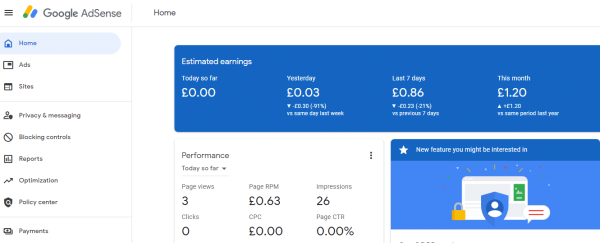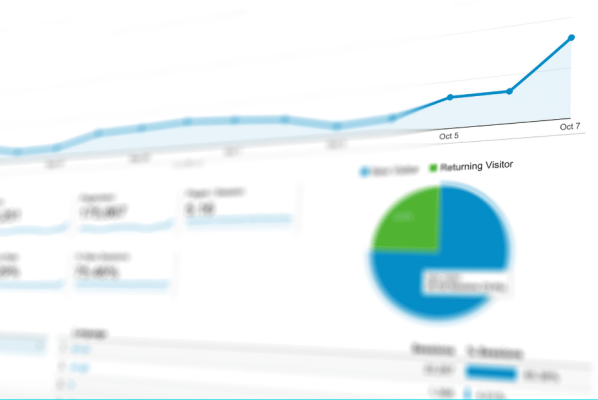No products in the cart.
Blogging
How To Create A Blog And Make Money: 12 Steps
A blog is a great way to make money. How? By writing and publishing your own content. A blog can be an excellent source of income if you know what you are doing. The following 12-step guide will show you How To Create A Blog And Make Money, which will provide some helpful tips for starting your blog and generating traffic as well as ideas to monetize it.
1. What is a blog and why do you need one?
A blog is a website where you can share your thoughts and ideas with the world. You can use it to promote your business, or just to keep in touch with friends and family. A blog is a great way to build an online presence for yourself or your business.
You need a blog because it’s a great way to connect with people online. A blog lets you share your thoughts and ideas with the world, and it gives you a place to promote your business or website.
If you’re looking for a way to connect with people online, a blog is a perfect solution.
If you’re looking for ways to make money online, a blog can help. A blog is a great way to create content that people will want to read, and it’s a great way to attract traffic to your website or business. You can also use a blog to promote your products and services.
A blog is an easy way for people who are interested in what you have to say about something – whether it’s travel or cooking, writing, or knitting – can follow along with whatever topic interests them. It helps build relationships with customers, and it can be a great way to connect with others who share your interests.
If you have something interesting to say, a blog is a perfect place to say it.

2. How to create your own website
There are a few ways that you can create your own website or blog. You can use a website builder, such as Wix or Squarespace, to create a professional-looking website in minutes. Or, if you want more control over your website’s design and functionality, you can install WordPress on your own web server.
However, another option that is becoming more and more popular with bloggers is to use a blogging platform like Medium. This allows you to write your blog posts on the main site itself rather than having to create your own website where people can read them. It also has many of the same features as WordPress such as user accounts, comments systems, and analytics.
It is also a great way to boost your SEO as you will be able to tap into the authority of Medium’s site and its huge number of users.
Though it is not necessary, I would recommend using a website builder or installing WordPress on your own server if you are new to blogging. You can always move over to a platform like Medium or Wix in the future when you’ve got some experience.

3. Setting up your domain name and hosting
Once you have chosen a topic for your blog, the next step is to set up your domain name and hosting. This can be done through a number of different providers, such as GoDaddy, BlueHost, or WP Engine.
When choosing a domain name, it’s important to choose one that is short and easy to remember, and that accurately reflects the topic of your blog. For example, if you are starting a blog about cooking, you might want to choose a domain name like “cookingtips.com” or “cookingadvice.net”.
When it comes to hosting, there are a number of different options to choose from. Shared hosting is the cheapest option. However, because many websites are now hosted on the same server (which reduces costs), you run a higher risk of experiencing downtime or slow loading times due to other users on that specific server. If your website is going to be receiving a lot of visitors, then shared hosting would not be recommended as it likely wouldn’t be able to handle the load.
In contrast, dedicated hosting is more expensive but it offers a higher level of performance and security. With this type of hosting, you are the only website on the server so you don’t have to worry about other websites slowing your down or taking your site offline completely.
Finally, there is VPS hosting which is somewhere between shared and dedicated hosting. With this type of hosting, you will have your own server but it will be located on a larger physical machine with several other VPS servers hosted on that same machine. This means that the performance tends to be better than shared hosting but not as good as dedicated hosting.
When choosing a hosting provider, it’s important to do your research and read reviews from other users to make sure you are getting the best possible deal for your needs. And don’t forget, many hosts offer money-back guarantees so if you’re not happy with their service, you can always switch providers.
Once you have your domain name and hosting set up, all you need to do is install WordPress.

4. Designing the look of your site
Now that you have set up your blog, it’s time to start designing the look of your site. This is an important step because the design of your blog will set the tone and help create a brand for your blog.
There are many different ways to design a blog, so you’ll need to find a style that feels right to you. Sometimes people design their blog using a pre-made theme, which is basically just the layout of your site that has already been designed for you by someone else.
Other times bloggers will create their own unique look from scratch or use elements they like and then build on them over time as they become more familiar with blogging technologies. Whichever route you choose, make sure that the design of your blog is cohesive and reflects your personality.
In terms of colors, fonts, and images, it’s best to keep things simple when you’re starting out. Too many different elements can be overwhelming and can distract from your content. Try to use a limited color palette and select a font that is easy to read.
In WordPress, you can use a theme or choose a layout and design your blog from scratch. There are various themes and templates to choose from and you can also find free fonts and images online. Just be sure to read the license agreements carefully before using any of them on your site.
When it comes to design, there are no right or wrong answers, so experimentation is key. Play around with different layouts, colors, and fonts until you find something that feels right.

5. Adding content to your site, including photos, descriptions, and prices
Now that your blog is looking great, it’s time to add some content.
When thinking about what you want to include on your site, remember that blogging isn’t just about writing about yourself. You can write about anything as long as it adds value for readers and provides the kind of information they are searching for online.
For example, if you’re a chef, you could write about recipes, cooking techniques, or food trends. If you own a boutique, you might post pictures of new arrivals and describe the latest styles.
Writing high-quality content is essential if you want to attract and keep readers. By taking the time to create well-written, informative posts, you’ll be able to establish yourself as an expert in your field. And that’s what will set you apart from the competition!
Adding high-quality images is a great way to make your blog posts stand out. Make sure to choose photos that are clear and well-lit, and include captions that provide information about the items pictured. You can use images from sites like Unsplash or Pexels, which offer free, high-quality stock photos.
Including prices on your blog can be a great way to attract potential customers. If you’re selling products, make sure to list the price next to each item. And if you’re offering services, list your rates on your Services page.
When writing descriptions, be sure to include all the pertinent information potential customers would need to know. What is the product made of? How does it work? When will it be delivered? Etc.
By taking the time to fill out your blog’s content, you’ll make it a valuable resource for readers. And that’s what will help you attract traffic and convert leads into customers!

6. Promoting your site on social media platforms
Social media can help you gain more readers. Make sure to post interesting and engaging content that will make people want to read your blog. You can also use social media platforms to drive traffic to your site.
When you publish new content on your blog, make sure to share it on social media. It is important to post regularly on social media, but it is also important not to spam your followers. If you don’t have a lot of people following you on Twitter or Facebook, start by sharing posts from other blogs and websites with similar content.
When you first begin writing on your blog, don’t expect that everyone will follow your blog immediately. It takes time to build an audience. Be patient and keep publishing great content. As your blog grows, you will attract more readers.
Some of the top social media sites to publish on include:
Facebook: Facebook has over a billion active users and is the most popular social media platform on the web.
Twitter: Twitter is another great place to publish your blog content as well as connect with other bloggers who have similar interests.
Pinterest: This site can be used for blogging by displaying images from your blog posts or linking to videos.
Linkedin: LinkedIn is a site that is popular with business professionals and can be used to promote your blog content to a wider audience.

7. Monetizing with Google AdSense Ads or Affiliate Links
When you start getting some traffic, it’s time to make some money.
One way is by placing Google AdSense ads on your blog, which you can do from the start with a free account. Another method involves joining Amazon Associates, which will let people buy items directly from links in your posts and get a commission for each sale.
You could also add affiliate links for other products or services that you think your audience would be interested in. Just make sure whatever you promote is relevant to your blog and its readers. As with any other form of monetization, be upfront about it and make sure your readers know what to expect.
You can sell your own products or services, as well. If you have something to sell, create a landing page on your website that provides more information and directs people there from your blog. You could also use an affiliate marketing program to promote other people’s products and services and earn a commission for each sale.
No matter how you monetize your blog, always be honest with your readers. They’ll appreciate the transparency and be more likely to come back for future posts.

8. The importance of SEO
SEO cannot be overemphasized. You can use a variety of methods to improve your SEO, including using the right keywords in your blog post titles and descriptions, optimizing your images, and linking to other authoritative websites.
When you are just starting out, it can be difficult to know what SEO techniques to use. However, there are a number of helpful resources available online, such as this guide from Moz.
Choosing easy to rank for keywords. Some keywords are harder to rank for than others, so choosing ones that you can rank well in the search engines for will help boost your blog’s ranking.
Your keyword research should include both long-tail and short-term goals. Long-term goals might be picking a subject area where there is a lot of demand but not much competition, while short-term goals could be targeting high-traffic keywords that are easier to rank for.
Some popular keyword research tools include Google AdWords Keyword Planner, SEMrush, and Ahrefs.
In WordPress you can use SEO plugins like Yoast SEO, or All in One SEO Pack, to easily implement these optimization techniques throughout your content.
It’s important to always be vigilant in your efforts to keep your blog ranking as high as possible in the search engines, as this will help you attract more visitors.

9. Blogging best practices
There is no one answer to this question – it depends on your blog, your audience, and what you’re hoping to achieve. However, a good rule of thumb is to post new content at least once a week. As for the language you use in your posts, aim for something that is clear, concise, and easy to understand – not only will you find it easier to write, but your readers will also enjoy reading what you’ve written.
Here are some useful tips on blogging best practices:
- Remember, you’re writing for your readers – not yourself;
- Write as if you were speaking to someone over coffee, and be mindful of your word count.
- Don’t write lengthy sentences. Keep it short and sweet! If a sentence is longer than four lines, break it up into two or more shorter sentences.
- Use active voice whenever possible;
- Use strong verbs and adjectives;
- Be concise – get to the point! ; and use images and multimedia to break up your text and add visual interest.
- Proofread your posts before publishing.
A final word of advice: be patient! Building an audience for your blog takes time, but if you stick with it and produce high-quality content on a regular basis, you’ll soon start to see results.
Remember that blogging best practices are ever-evolving – as your blog grows, you’ll find there is a lot more information on the subject.

10. How To Track Your Blog’s Progress
By using Google Analytics you can track how many people are visiting your blog, what pages they’re visiting, and where they’re coming from. This information can help you make decisions about which topics to write about, what kinds of content to produce, and how to improve your blog’s overall design and navigation.
It will also give you an idea of which keywords people are using to find your blog, and how much traffic they’re sending.
Installing the Google search console will also help you track your blog’s progress. It will show you how often your blog is being indexed by Google, the number of impressions and clicks your website is getting from search results, and other useful information.
You can use other tools like OptinMonster or Clicky to track your readers’ behavior on the blog. This will help you figure out why some posts perform better than others and what content is more engaging for users so that you can write more of it. It also helps you find out what kind of posts attract links and social shares, which in turn help your blog’s search engine rankings (and indirectly its performance).
An effective way to increase readership is by repurposing content. Repurpose old videos into podcasts or webinars; take an older article and turn it into a SlideShare presentation; take an older post and rewrite it as a guest blog post.
Repurposing can also help you build backlinks to your most popular posts, which in turn helps the search engines find your site more easily.

11. Tips for staying motivated
When you are starting a blog it can be really easy to get discouraged. Especially when you are not seeing the numbers that you want to see in terms of traffic or earnings. Here are a few tips for staying motivated and keeping your blog going strong:
- Create a goal sheet and track your progress each month. This will help keep you accountable and on track.
- Set smaller goals in addition to your bigger goals. This will give you a sense of accomplishment as you reach each goal.
- Create a content schedule and stick to it. This will help you stay on track and make sure that your blog is regularly updated.
- Find blogging buddies who can support and encourage you. Building a supportive community is key when it comes to blogging.
- Take a break from time to time and do something that you enjoy doing. It is important not only for your blog but also for your mental health!
- Never compare yourself or your journey to others, everyone’s path in life is different and it will all pay off in the end!
12. How to make money blogging
When you are just starting out, it can be difficult to make money blogging. There are a few ways that you can monetize your blog content:
- Advertising: This is the most common way to make money blogging. You can sell ad space on your website to companies or individuals.
- Affiliate Marketing: If you are an affiliate for a company, you can promote their products and earn a commission for every sale that you generate.
- Sponsored Posts: Companies will sometimes pay bloggers to write about their products or services.
- Product Reviews: Many companies will pay bloggers to review their products.
- Digital Products: You can create and sell digital products, such as ebooks, courses, or templates.
- Services: You can offer your services, such as writing, designing, or marketing, to businesses or individuals.
- Sponsored Social Media Posts: You can often make money blogging by promoting companies on your social media accounts, such as Instagram or Twitter.
Conclusion
You can see how easy it is to create a blog that you love. It’s a great way to express yourself and even make money! If you need help, don’t be afraid – there are plenty of resources out there for beginners like you.
The most important thing is to just get started! Once you do, the rest will come naturally. Now that you know how easy it can be, there’s no reason not to start your blog today.
Congratulations on making a great decision! You are already ahead of millions who make money blogging every day.
You’re ready! Ready to start your blog and make money, that is! You’ve learned how easy it is and now all there’s left for you to do is actually get started using the steps outlined above. Don’t be afraid to ask for help if you need it – that’s what this blog post is for! I’m rooting for you and can’t wait to see your amazing blog.


